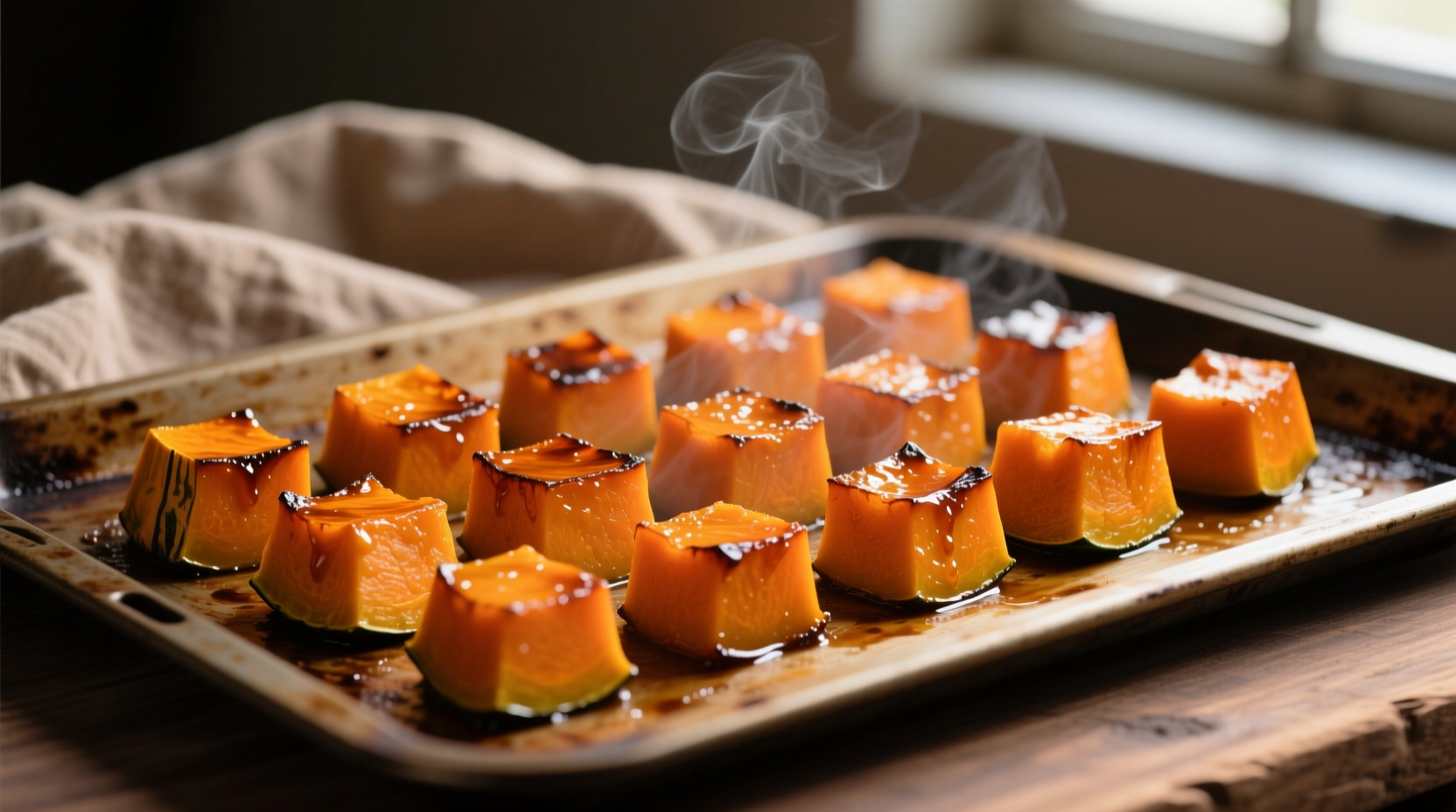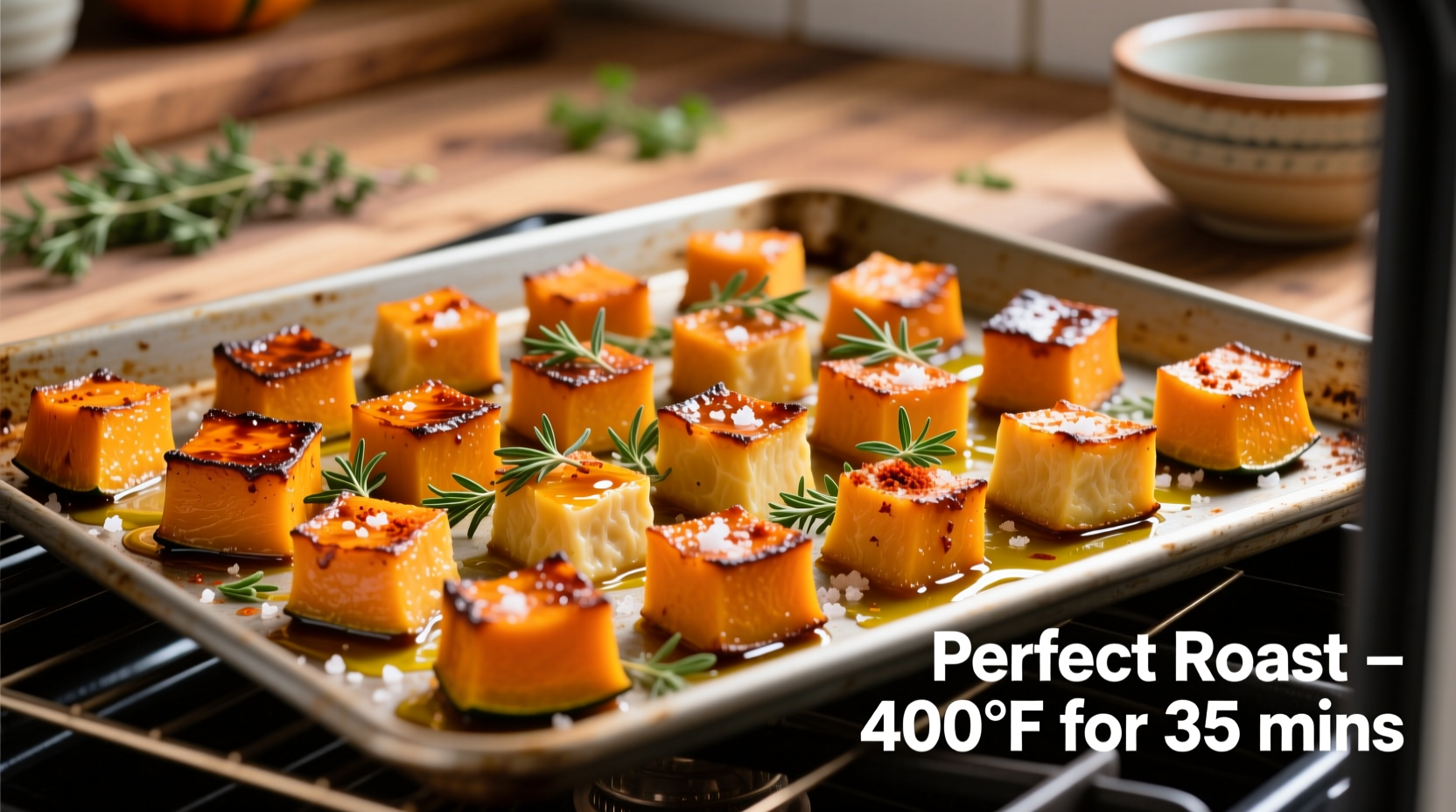Nothing beats the sweet, nutty flavor of perfectly roasted butternut squash. When prepared correctly in the oven, this humble winter vegetable becomes a showstopper side dish that complements everything from roasted chicken to grain bowls. Our tested method delivers consistent results every time, whether you're a beginner cook or seasoned kitchen veteran.
Why Oven Roasting Beats Other Cooking Methods
While butternut squash can be steamed, boiled, or microwaved, oven roasting creates superior flavor through caramelization. The dry heat of the oven concentrates natural sugars while developing complex flavor compounds that other methods can't match. According to culinary research from the Culinary Institute of America, roasting vegetables at high temperatures (400°F/200°C) creates Maillard reactions that enhance sweetness without added sugar.
| Cooking Method | Texture Result | Flavor Development | Time Required |
|---|---|---|---|
| Oven Roasting | Firm yet tender with caramelized edges | Maximum sweetness and depth | 25-35 minutes |
| Boiling | Soft and sometimes waterlogged | Muted natural flavors | 15-20 minutes |
| Steaming | Uniformly soft | Mild flavor retention | 15-20 minutes |
Essential Preparation Techniques
Proper preparation ensures even cooking and safety. Butternut squash has a tough outer skin that requires careful handling. The National Center for Home Food Preservation recommends these steps for safe preparation:
- Stabilize before cutting: Slice 1/2 inch off both ends to create flat surfaces
- Peel efficiently: Use a sharp vegetable peeler or chef's knife, working from top to bottom
- Cut safely: Slice in half lengthwise, scoop out seeds with a spoon, then cut into uniform 3/4-inch cubes
- Consistent sizing: Keep pieces uniform (about 3/4 inch) for even cooking

Step-by-Step Roasting Process
Follow these precise steps for foolproof results every time:
- Preheat oven to 400°F (200°C) with rack in center position
- Prepare squash: Toss 1 medium squash (about 2 lbs), cubed, with 1½ tablespoons olive oil, ½ teaspoon salt, and ¼ teaspoon black pepper
- Arrange properly: Spread in single layer on parchment-lined baking sheet with space between pieces
- Roast: 25-30 minutes, flipping halfway through, until fork-tender with golden brown edges
- Test for doneness: Squash should offer slight resistance when pierced with fork (not mushy)
Flavor Variations to Elevate Your Dish
While classic seasoning works beautifully, these professional chef-approved variations add exciting dimensions:
- Mediterranean: Toss with 1 teaspoon dried thyme, 2 minced garlic cloves, and lemon zest before roasting
- Sweet & Spiced: Add ½ teaspoon cinnamon, ¼ teaspoon nutmeg, and 1 tablespoon maple syrup to oil mixture
- Herb-Infused: Toss finished squash with 2 tablespoons fresh sage or rosemary
- Umami Boost: Sprinkle with 1 tablespoon nutritional yeast before serving
Avoiding Common Roasting Mistakes
Even experienced cooks make these preventable errors. The American Test Kitchen identifies these critical pitfalls:
- Overcrowding the pan: Causes steaming instead of roasting - use two pans if needed
- Insufficient oil: Squash needs enough fat to conduct heat properly (1½ Tbsp per pound)
- Skipping the flip: Turn halfway for even browning on all sides
- Underseasoning: Butternut squash needs more salt than you might expect
Serving Suggestions and Pairings
Roasted butternut squash shines in countless applications. Nutritionists at the Harvard T.H. Chan School of Public Health recommend incorporating roasted vegetables into balanced meals for maximum nutrient absorption. Try these pairings:
- With proteins: Excellent alongside roasted chicken, pork tenderloin, or baked salmon
- In salads: Toss with arugula, goat cheese, and balsamic vinaigrette
- As a side: Perfect with wild rice pilaf or quinoa
- For breakfast: Mix into scrambled eggs or frittatas
Storage and Reheating Guidelines
Proper storage maintains quality and food safety. According to USDA food safety guidelines:
- Refrigeration: Store in airtight container for up to 4 days
- Freezing: Freeze on baking sheet first, then transfer to freezer bags for up to 3 months
- Reheating: Best reheated in oven at 350°F (175°C) for 10-15 minutes to maintain texture
- Avoid microwave: Makes squash soggy - use oven or air fryer instead
Troubleshooting Guide
When issues arise, these solutions will rescue your dish:
- Soggy squash: Increase oven temperature to 425°F (220°C) and spread in single layer with space between pieces
- Uneven cooking: Cut pieces to uniform size (3/4 inch) and rotate pan halfway through cooking
- Burnt edges: Reduce temperature to 375°F (190°C) and check 5 minutes earlier
- Bland flavor: Increase seasoning - butternut squash needs more salt than expected











 浙公网安备
33010002000092号
浙公网安备
33010002000092号 浙B2-20120091-4
浙B2-20120091-4